1. Coordinate with attendees to avoid too much food
If you have guests contributing dishes to the feast, keep tabs on what everyone’s bringing so you can plan accordingly and avoid making too much food — or duplicating a guest’s dish.

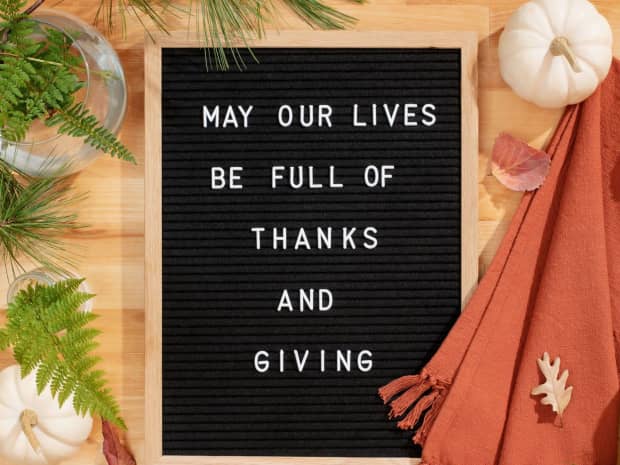
Last Updated: August 17, 2021
Food waste in the U.S. is a serious problem that gets worse during the holidays. Here’s how to have a sustainable Thanksgiving to enjoy time with friends and family while reducing your carbon footprint.
It’s not surprising that household garbage — including food waste — increases by as much as 25 percent during the holiday season between Thanksgiving and New Year’s. What is surprising is that in America, food is the largest category of waste in municipal landfills, and it releases an enormous amount of greenhouse gases as it decomposes. When food waste goes into a landfill it releases methane, a potent greenhouse gas.
The good news is that in 2015, the United States Department of Agriculture (USDA) and the Environmental Protection Agency (EPA) announced an ambitious goal to cut domestic food waste in half by 2030. The feds want you — and every other American — to go from tossing 218.9 pounds of food in the garbage each year to throwing away just 109.4 pounds each.
And the holidays are a great place to start. Whatever the size of your Thanksgiving guest list, you can do your part to reduce the environmental impact of your get-together. Have a look below for some tips.
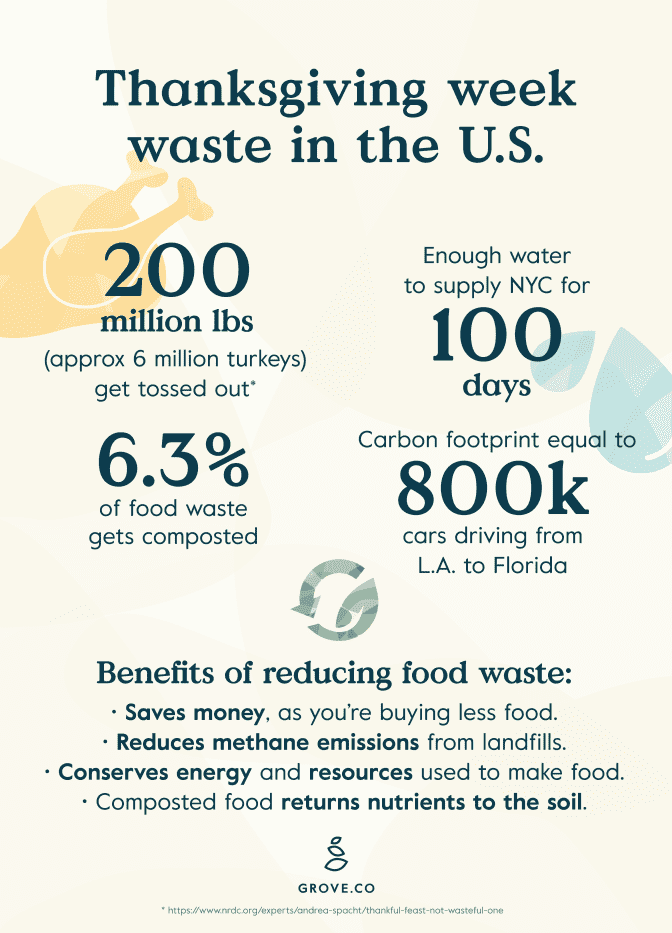
A sustainable, eco-friendly holiday spread requires serious forethought, coordination, and communication with your guests. Here are some planning tips for a green Thanksgiving.
If you have guests contributing dishes to the feast, keep tabs on what everyone’s bringing so you can plan accordingly and avoid making too much food — or duplicating a guest’s dish.
Engage your family and friends in a quest for a more sustainable holiday. If they’re contributing to the feast, ask them to bring food in reusable dishes rather than disposable ones.
Challenge guests to eat everything on their plates to cut down on wasted food. And make sure everyone knows where the recycling and compost bins are.
Around 83 percent of greenhouse gas emissions from food come from its production. The less prepared and packaged food you buy, the lower your carbon footprint.
Try your hand at baking dinner rolls, pies, and other items you might otherwise buy pre-made.
Early November is a good time to clean out your cupboards — chances are, some of the ingredients on your list are hiding in the back.
If one recipe calls for a half container of broth, find another recipe that will use the rest — it could be something you’ll make a few days later.
If no one ever touches the jello-carrot salad besides Uncle Don, save yourself time and skip it — or make a much smaller dish of it.
Similarly, if past years have found you up to your ears in leftover mashed potatoes, make a smaller batch this year. Portion control isn't a bad thing ... even on Thanksgiving.
Resist the temptation to buy disposable plastic containers for leftovers. Instead, figure out what you’re going to need to store, and choose the appropriate eco-friendly solutions — which we’ll describe more later on.
Make room for groceries and leftovers in the freezer and fridge so that you can find what you need quickly when it’s go-time — plus your leftovers won’t be as likely to get lost and forgotten.
Don't forget to double-check your grocery list too. Make sure everything you need is on your list to avoid extra trips to the store.
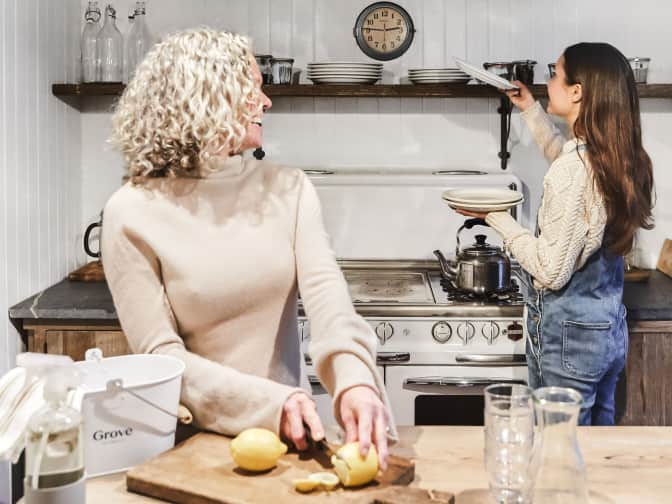
Animal products require 4 to 40 times the calories in crops to produce than they provide in nutrition. To sustain a global, largely meat-dependent population, food production will need to increase by 70 percent by 2050 — one reason why so many people across the world are turning to a meatless diet.
Granted, going totally meatless isn’t for everyone, but even reducing your meat and dairy consumption can make a difference in the environment — and it’s been shown to improve your health, including substantially lowering your risk for heart disease.
Here are 4 options that are more eco-friendly than cooking a giant turkey this year.
Grove Tip
When planning your menu, keep in mind that one serving of a protein, veggie, or starch is about 3/4 cup. Some guests will eat more, some less.
This NRDC calculator helps you estimate how much food you’ll need based on who’s coming and whether they’re a big, normal, or small eater.
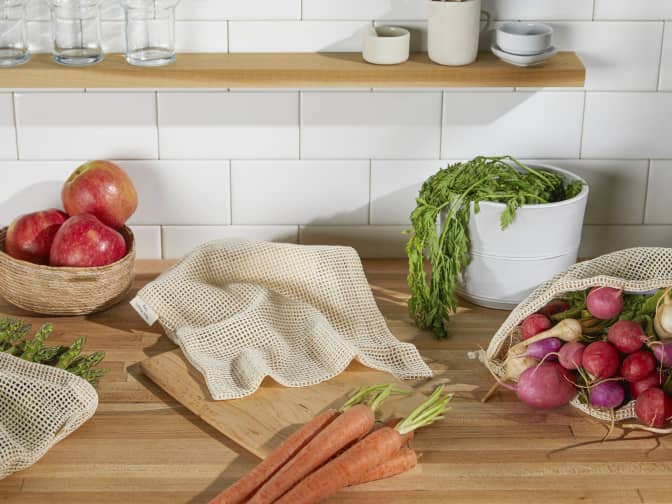
Combating food waste starts with your exceptional planning skills. These sustainable shopping tips will help you make the best choices for the environment and your guests as you gather the ingredients for your feast.
The closer your food is grown, the lower the environmental impact of what you eat. Shop farmer’s markets or order a box of produce from a local farm offering that service. These options are likely to be organic, making it a double win.
If you’re buying a turkey, source it from a local farm, or at least choose an organic, cage-free turkey if possible.
Bring reusable produce bags to the grocery store or skip the bag altogether. And definitely avoid the pre-cut produce in single-use plastic packaging, which can’t be recycled.
Nuts, spices, and dry baking ingredients are just some of the ingredients you can buy in bulk from the bins, which reduces packaging waste and saves you money.
Bonus: Check with your local bulk outlet to see if they allow you to bring your own containers.
It’s tempting to make extra purchases — last minute cheese and crackers, a couple jars of olives, an emergency frozen pie — but resist as best you can so as to not have extra food waste.
If you’re a food warehouse club member, you can buy larger versions of some of your ingredients. For example, one 46-ounce can of food has just under three times the servings of a 16-ounce can, reducing the amount of packaging you’ll have to recycle.
The short answer is ... neither. Here are a couple of tips for reusable or sustainable options when it comes to paper or plastic choices.
If you can’t bring your own reusable bag (which is the best option for our dear planet), you can cut down on waste by filling your paper bags up as much as possible.
Don't wrap meat, wine, or non-food items in a separate plastic bag before sacking either. Then reuse your paper bag as a trash or recycling bag for your guests during the holiday get-togethers. You can also wrap gifts with them, put them down in the garden to suppress weeds, or compost them.
When it comes to paper vs. plastic plates and cutlery, we've got a better alternative. Compostable plastes and cutlery (plus cooking tools too) are now available with the same convenience as the paper/plastic versions, but a better ending for the planet. Just throw them in your compost bin and they will break down much quicker than their plastic and paper counterparts.
Grove Sustainability Tip
Plastic bags account for about 12 percent of the plastic in America and take centuries to decompose. If you choose plastic, make sure the bags don’t end up in the environment or landfill. Since most curbside recycling outfits don’t accept plastic bags, you’ll need to take them to a recycling facility that works with them.
Paper bags are made from trees or recycled paper. They require more energy to produce — and account for more greenhouse gases — than plastic bags. If you choose paper bags, try to get as much use out of them as possible.
Single-use cans and bottles actually make up more than 60 million of the plastic bottles that end up in America’s landfills and incinerators every single day, and those that don’t make it to the recycling bin or landfill choke streams and rivers and end up in the ocean.
Instead of bottled water, serve filtered water from the tap — make it festive by putting it in a clear pitcher with some ice and sliced lemons. If you’re going to offer soda, choose aluminum cans — and be sure to recycle them.
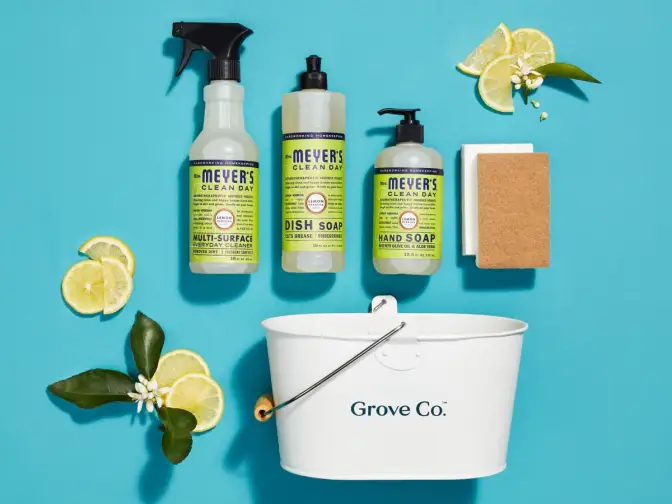
Wondering who Grove is, what types of products we offer, and how to get a free gift set when you sign up? Learn more about flexible monthly shipments, customizing your shipment, and joining millions of happy households — no monthly fees or commitments required.
Prepping and cooking is when a lot of food and environmental waste happens. Follow these tips to make both parts of the meal as easy on the earth as possible.
Before you start prepping, set out a container for trash, one for recycling, and one for compost. Put them right next to your prep space for easy access.
If you have guests helping you prepare, make sure the containers are clearly labeled for your helpers.
Check all of your plastic packaging for the recycle symbol, and find out which types of recyclables your curbside service accepts. Don’t be a “wishcycler” who tosses everything with a symbol in the bin.
Collect the plastics your service doesn’t accept, and take them to a facility that does. Meanwhile, rinse and recycle everything you can — aluminum, cardboard, plastics, and glass.
Try to cut away as little of your vegetables as possible to reduce waste. You may also want to reconsider peeling the carrots and potatoes — the skins are healthy and delicious!
Instead of composting your vegetable scraps, freeze them to make homemade stock later on.
If you usually cook your turkey in a disposable pan, maybe it’s time to invest in a good-quality roasting pan instead. You’ll be able to use it for holiday feasts forever more — waste-free.
Plan your cooking to minimize the use of the oven and stove top.
Double-up in the oven when dishes need to be cooked at the same temperature. On the stovetop, keep the temperature as low as possible to use less energy and prevent over-cooking.
Find a timer app for your phone that can handle multiple timers at once. Set timers for everything that could overcook or burn — especially the bread.
While you’re cooking dishes on the stove, turn the hood exhaust to vent moisture and cooking fumes outside for better air quality in the kitchen.
When it’s time to gather ‘round and pile the food up on those plates, don’t undo your sustainable gains.
Avoid using plastic disposable dishes, cups, and utensils. If you’re having more guests than you have dishes, see if you can borrow some place settings. If yours will be a large affair, you can rent dishes from a party supply store for not much more than it would cost to go disposable.
If you use disposable plates, silverware, or cups, opt for compostable or biodegradable.
Cloth napkins and reusable paper towels result in zero waste, and you can use them throughout the holidays and beyond.
They’re inexpensive to buy, or if you’re crafty, you can make them yourself.
It’s tempting to fill up your plate at any feast, but eyes are often bigger than stomachs. To encourage guests to take less at the outset, put smaller serving spoons in each dish.
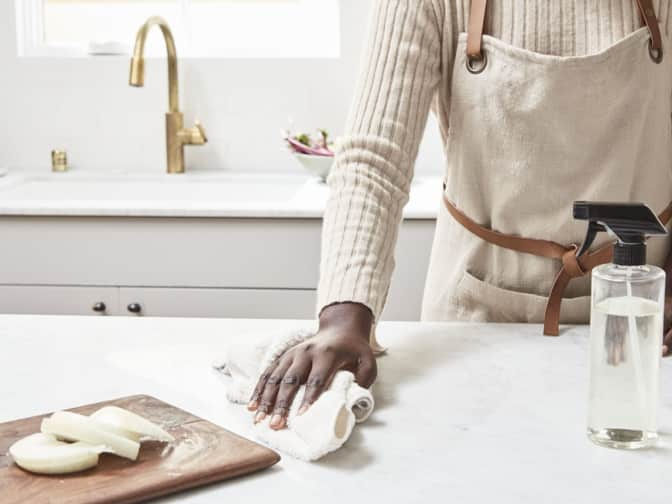
Clean up is where a lot of food waste happens. Here’s how to do it in a more sustainable way.
Non-meat scraps go in the compost bag. If you don’t compost, see if your city offers curbside compost pickup, or find a city compost pile where you can drop off your food scraps.
Save all your meat scraps for Fido, or send them along for a guest’s dog.
Washing your dishes in the dishwasher uses less water than washing them by hand, but it may take a few rounds. Use less water and save energy by filling the dishwasher full and running the machine on the shortest cycle.
Forego the drying cycle — instead, open the door after the last rinse, and let the dishes air-dry, or dry them with a towel.
Organize your leftovers in non-plastic options (below) so your fridge doesn’t fill up willy-nilly with dishes you can’t identify and that make it difficult to see what you’ve got. Send leftovers home with guests too so they aren't all on your plate, literally.
Then, before they go bad, freeze the leftovers you won’t have time to eat.
Cleaning up also involves wiping down the tables, chairs, floors, and counters all that food was prepped and eaten on.
Try out some sustainable swaps for cleaning this year by using cleaning concentrates that fill up big reusable glass spray bottles or compostable kitchen wipes.
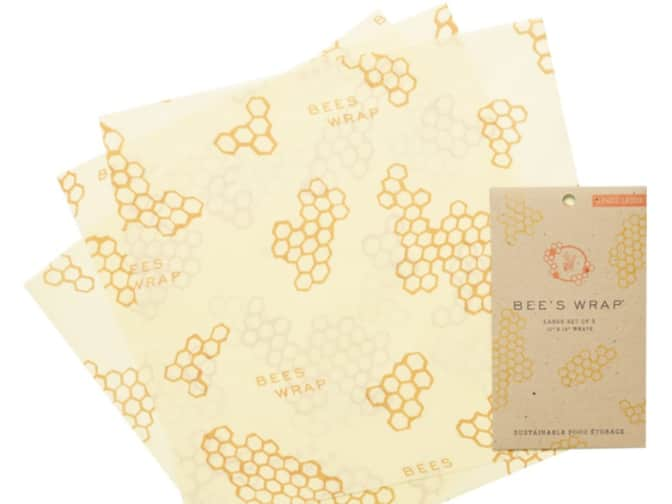
Bee’s Wrap is a very effective — and earth-friendly — alternative to plastic wrap. Made from organic cotton, tree resin, jojoba oil, and beeswax, these handy wraps snugly fit over any opening — seal food in a bowl, wrap up baked goods, or cover half a melon. They even offer vegan options (without beeswax) too!
They last around a year — once they’re no longer sticky, cut them into strips, and compost them.
Learn more about Bee's Wrap and other reusable food storage from mom of 3, Carly Reynolds, who tried out the difference versions at her home.
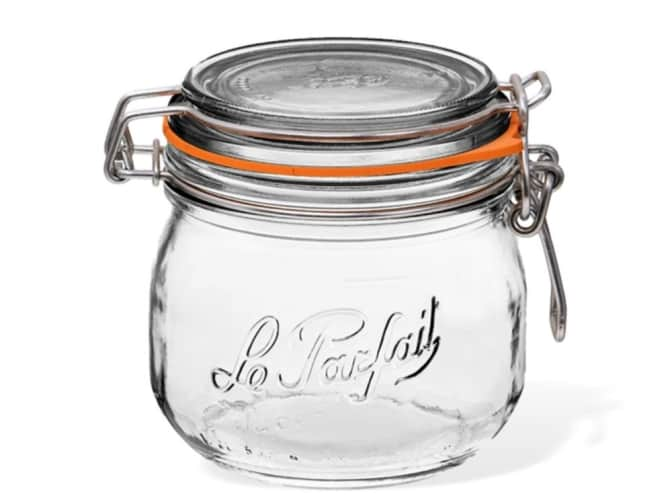
Glass jars, especially Le Parfait's, make excellent storage containers for leftovers. They’re clear, so you can see what’s in them. The lids clamp on air-tight, and their size and shape make them easy to fit and keep organized in the fridge.
You can also save glass jars from sauces or other store-bought foods leading up to the feast so that you have plenty on hand. When you empty them, try adding fruit to the jars to keep it lasting longer year-round until your next holiday feast.

Marley's Monsters Linen Bowl and Pan Covers are literally the easiest way to put away leftovers.
Just pop a bowl cover on top of the mashed potatoes bowl and stick it in the fridge, done! Or grab the pan of greenbeen casserole and put a pan cover over it for easy snacking from the fridge later on. Then, when leftovers are eat, wash the covers and use them for dinner leftovers until the next holiday.
Teresa W. wrote about these covers, "I love this cover! I have the medium and will be buying the large as well. Please make the lemons in small too!!! Easy to care for, easier to use than cling wrap, and adds a fun splash of color to the kitchen. Present food in style when bringing to a picnic, or when it’s safe for you, a dinner party."
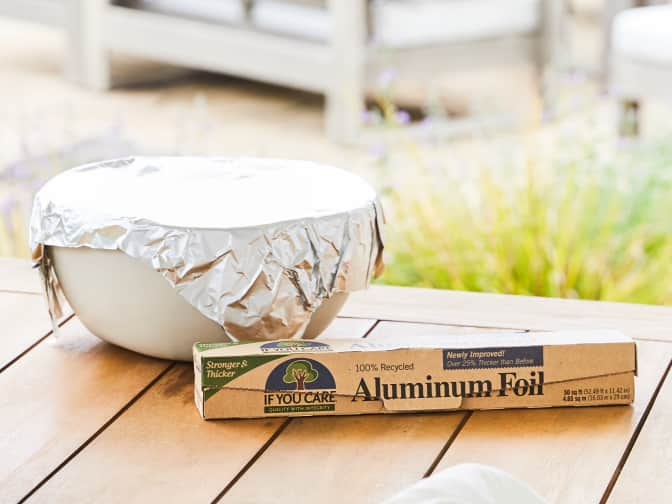
Aluminum foil made from recycled aluminum is more eco-friendly than brand-new foil. However, all aluminum is 100 percent recyclable.
Spoiler alert: Many recyclers won’t accept it, since it’s often contaminated with food. But aluminum is only environmentally friendly if you recycle it, so you may have to make a trip to the aluminum recycling plant to do it. Otherwise, you can wash it and reuse it. Aluminum is dishwasher-friendly — just lay it flat on the top rack — or you can wash it by hand with soap and water.
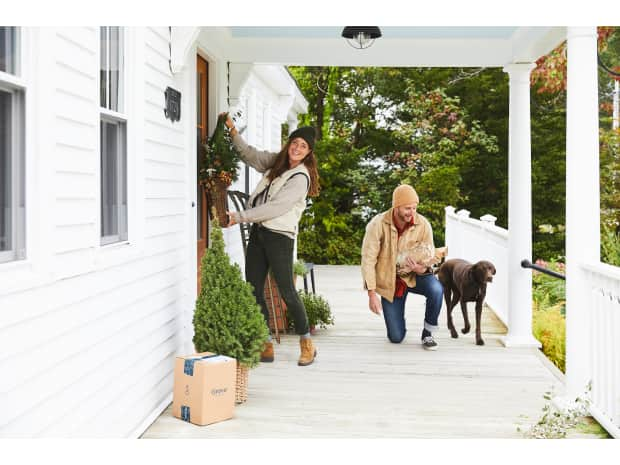
Here’s how to green your holiday celebrations so they’re festive but also eco-friendly and sustainable.
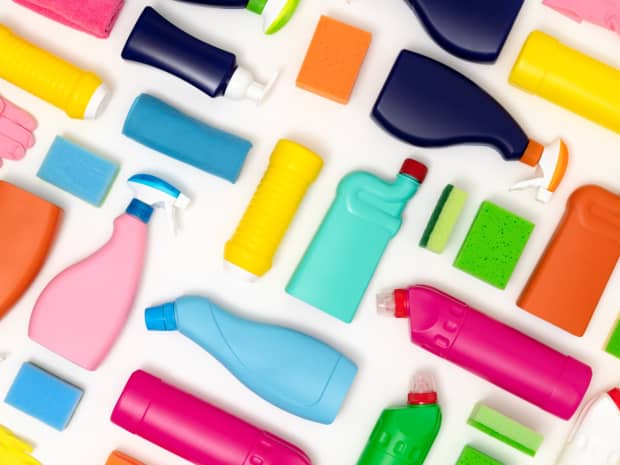
Find out what you can do with all that packaging for household products you buy all the time (instead of throwing it away).

Take out the trash in your kiddo's routine and teach them how to reduce waste and make environmentally friendly choices at home and on the go.
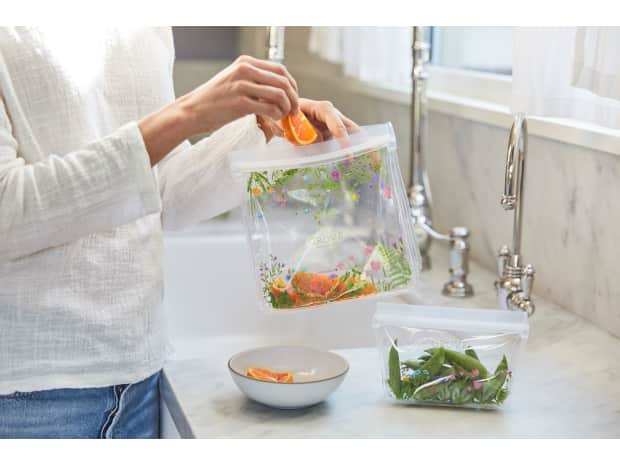
Zero waste can sound impossible, but the truth about zero waste is a little more complicated and a lot more doable.